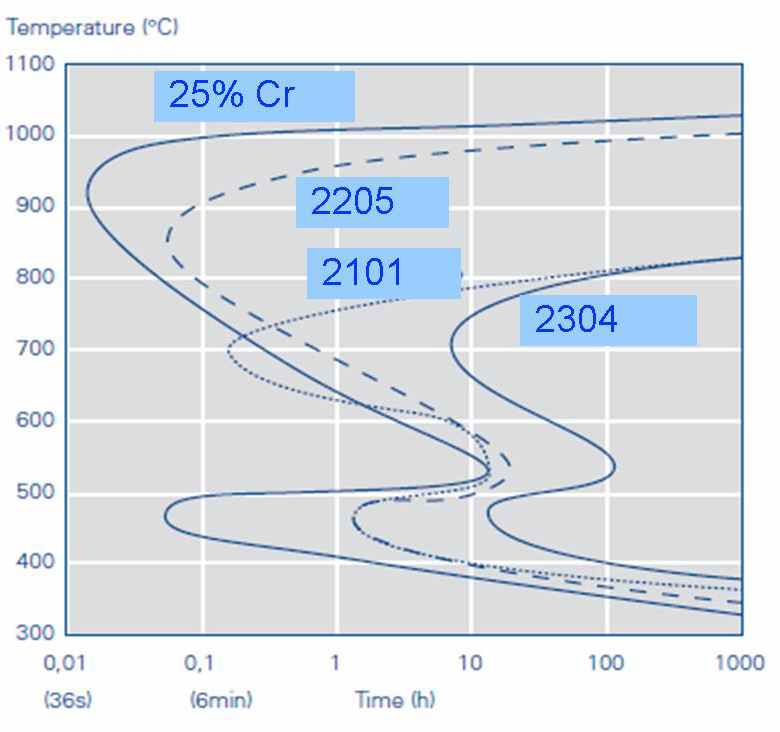Barrier to Using Duplex Stainless Steel
The attractive combination of high strength, wide range of corrosion resistance, moderate weldability would seem to offer great potential for increasing the market share of duplex stainless steel. However, it is important to understand the limitations of duplex stainless steel and why they are always likely to be “niche players”.
The advantage of high strength immediately becomes a disadvantage when considering formability and machinability. The high strength also comes with lower ductility than austenitic stainless steel grades. Therefore, any application requiring a high degree of formability, for example, a sink, is ruled out for duplex grades. Even when the ductility is adequate, higher forces are required to form the material, for example in tube bending. There is one exception to the normal rule of poorer machinability, grade 1.4162.
The metallurgy of duplex stainless steel is much more complex than for austenitic or ferritic steel. This is why 3 day conferences can be devoted just to duplex! This factor means that they are more difficult to produce at the mill and to fabricate.
In addition to ferrite and austenite, duplex steel can also form a number of unwanted phases if the steel is not given the correct processing, notably in heat treatment.
Two of the most important phases are illustrated in the diagram below:
| Sigma phase |
 |
| 475 degree embrittlement |
Both of these phases lead to embrittlement, i.e. loss of impact toughness.
The formation of sigma phase is most likely to occur when the cooling rate during manufacture or welding is not fast enough. The more highly alloyed the steel, the higher the probability of sigma phase formation. Therefore, superduplex steel are most prone to this problem.
475 degree embrittlement is due to the formation of a phase called α′ (alpha prime). Although the worst temperature is 475 deg C, it can still form at temperatures as low as 300 deg C. This leads to a limitation on the maximum service temperature for duplex steel. This restriction reduces the potential range of applications even further.
At the other end of the scale, there is a restriction on the low temperature use of duplex stainless steel compared to austenitic grades. Unlike austenitic steel duplex steel exhibit a ductile-brittle transition in the impact test. A typical test temperature is minus 46 deg C for offshore oil and gas applications. Minus 80 deg C is the lowest temperature that is normally encountered for duplex stainless steel.
Related References:
1. Duplex Stainless Steel Pipe
2. Duplex Stainless Steel
3. Super-Duplex Stainless Steel
4. Principle of Duplex Stainless Steel
5. How the Austenite Ferrite Balance Achieved
6. Corrosion Resistance of Duplex Stainless Steel
7. Stress Corrosion Cracking SCC of Duplex Stainless Steel
8. Barrier to Using Duplex Stainless Steel
9. Duplex Stainless Steel Grades Comparison Table
10. S32101 | S32205/S31803 | S32304 | S32750 | S32760
|
